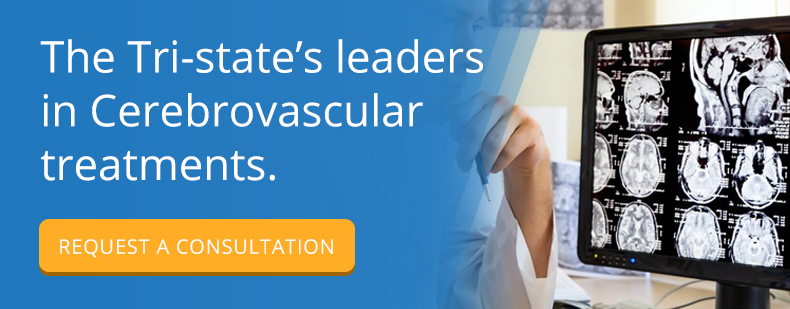About one in three people who experience a transient ischemic attack, or TIA, can expect to have a stroke in the weeks or months following the attack. Since the symptoms of a TIA are temporary, treatment after an attack frequently focuses on preventing other events in the future. Depending on the cause and individual circumstances, the approach on how to treat TIA may include lifestyle modifications, medications or surgical procedures to eliminate blockages and improve blood flow to the brain.
What Is a TIA?
A transient ischemic attack is a brief episode of interrupted blood flow to the brain, which causes stroke-like symptoms such as weakness and numbness on one side of the body; speech, vision and coordination problems; difficulty swallowing; and sudden, severe headaches. These symptoms typically resolve within an hour or a day, but because they are also the symptoms of a full-blown stroke, prompt medical evaluation is essential.
How Is a TIA Diagnosed?
A transient ischemic attack is typically diagnosed from presenting symptoms and medical history. But because the disruption in blood flow to the brain that occurs during a TIA can come from several sources, more tests may be in order to find the exact cause and assess the damage done by the attack.
Your doctor may order a CT (computed tomography) scan or MRI (magnetic resonance imaging), ultrasound or angiograms to locate blockages. Additional tests can include an electrocardiogram (ECG/EKG) or echocardiogram to examine the heart, chest X-rays and blood tests. These tests can help your doctors determine how to treat TIA based on your particular health conditions.
What Causes a TIA?
A number of health conditions can cause — or contribute to — a TIA. Disorders of the cardiovascular system, chronic conditions affecting circulation and blood flow, and even poor nutrition and lifestyle choices such as smoking can play a role. Typical causes include the following:
Carotid Artery Disease
“Hardening” or narrowing of the arteries, also known as atherosclerosis, particularly the two large carotid arteries in the sides of the neck, can reduce the brain’s blood flow. Carotid artery disease is typically caused by the buildup of plaque in the arteries, which makes them stiff and narrow. Made of deposits of cholesterol, calcium and other kinds of cellular debris, plaque can accumulate on artery walls or break loose and travel to other sites in the body.
Blood Vessel Blockage
Clumps of plaque or blood clots from other parts of the body can migrate into a blood vessel in the brain, blocking the flow of blood and oxygen, usually only temporarily.
Abnormalities in the Brain’s Blood Vessels
Problems with the small blood vessels in the brain can create conditions that impede the flow of blood and oxygen to certain areas of the brain.
TIAs and Stroke
The risk of a stroke increases after a TIA, although not everyone who experiences a TIA will have a stroke. However, some factors put a person who has had a TIA at greater risk for a post-TIA stroke. Older patients face a higher risk and so do those with diabetes or a history of large artery atherosclerosis or atrial fibrillation. Smoking, obesity, hypertension and high cholesterol levels may also predispose a person to a higher risk of stroke, so addressing these issues is an important part of treating a TIA.
How To Treat a TIA: Individualized Approaches
When determining how to treat a TIA, your doctor will consider your age, medical history and other circumstances. Treatment options include lifestyle changes, medication or neurosurgery — or a combination of these.
Lifestyle Management
Smoking, inactivity and an unhealthy diet all contribute to artery disease and heart and circulation problems. Stopping smoking, exercising more and adopting a healthy diet can lower blood pressure, reduce excess weight and keep the cardiovascular system functioning smoothly. For many people, adopting these kinds of long-term lifestyle changes alone can significantly lower the risk of stroke.
Medication
Along with lifestyle management, medications such as anticoagulants, antiplatelets and statin drugs can also help reduce the risk of TIAs and stroke. Antiplatelet medications such as aspirin can prevent blood clots from forming. Anticoagulants, or blood thinners, such as Warfarin can keep blood flowing smoothly. This can be especially important for those who have atrial fibrillation, a condition that allows blood to pool in the chambers of the heart.
High cholesterol levels can contribute to the accumulation of plaque in the arteries, so statin drugs to block the liver’s production of cholesterol can also be prescribed to reduce the risk of a TIA and stroke. And because high blood pressure can also raise the risk for stroke, a variety of antihypertensive medications, such as diuretics and calcium channel blockers, may also be part of the treatment plan for how to treat a TIA.
Surgery
For some people, surgical intervention can provide the best option for reducing the risk of future events. Carotid neovascularization and cerebral bypass surgery are two procedures frequently performed by neurosurgeons to improve blood flow to the brain.
Carotid neovascularization is a surgery performed on one or both of the carotid arteries in the neck. This procedure removes some of the lining of the artery in order to clear plaque accumulation and restore blood flow through the artery to the brain.
When problems in the small arteries of the brain cause a TIA, cerebral bypass surgery can reduce stroke risk by “re-routing” blood vessels around an abnormal area in order to keep blood flowing freely throughout the brain.
After a TIA, treatment focuses on reducing or eliminating the risk factors for future events. With options ranging from lifestyle changes to cutting-edge neurosurgery, your doctors can create the post-TIA treatment plan that’s right for you.


